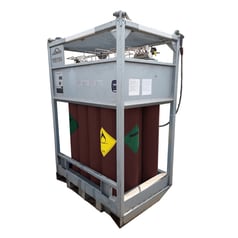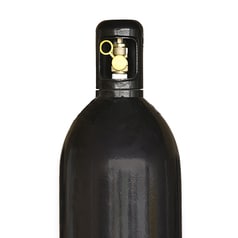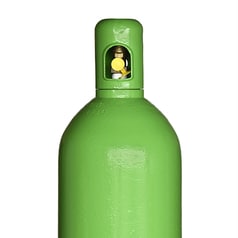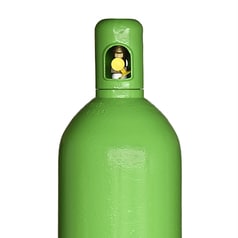Pour bénéficier d’un affichage optimal de la boutique en ligne de PanGas, vous avez besoin pour le navigateur de la version minimale suivante:
• Internet Explorer 9.0
• Mozilla Firefox 38
• Safari 8
• Chrome 45
Veuillez vous assurer que JavaScript est activé dans les paramètres de votre navigateur.
Cutting
There are several ways to separate materials. These include mechanical methods, such as cutting or slicing, and thermal methods such as cutting with oxyfuel, plasma or laser
Cutting with oxyfuel, plasma and laser uses thermal energy to anneal materials to a temperature at which they burn, melt or evaporate. When cutting with oxyfuel or with laser in combination with oxygen, the exothermic energy of the reaction with oxygen is used in the process. The flame/laser jet is only needed to anneal the material until the ignition temperature is reached. The oxygen jet keeps the combustion process going and blows away molten material and slag.
More information
The cutting speed depends on the purity of the oxygen and the shape of the cutting head. With high-purity oxygen, an optimized cutting head design and a good gas supply, high productivity can be achieved. In plasma cutting and laser cutting with nitrogen, the material is heated to its melting point and the cutting gas blows the melt out of the material. For best results, the properties of the cutting gases must be matched to the specific application.
Lasers can also be used to vaporize materials such as wood and plastics. Evaporation of metals is used for laser drilling and pilot drilling, among other things. Gases are used to prevent the ignition of surrounding combustible material and to support the removal of drilled away material.
Cutting with the CO2 laser
Working welds in LASERLINE® quality offer a suitable solution for any cutting task. A wide range of materials can be cut with the laser beam:
- Tool steel
- Non-ferrous metals
- Al and Al alloys
- Ti and Ti alloys
- Plastics, e.g., acrylic glass
- Structural steels, unalloyed and low alloyed, galvanized, painted or coated
- High alloyed steel, e.g. chrome nickel steel
- Rubber, paper, wool, cotton, laminated wood and quartz glass
Laser cutting
The material is heated to ignition temperature by the laser beam. The material burns due to the supply of oxygen. This releases process-supporting heat. This leads to high cutting speeds. This process is mainly used to cut metals. Tests conducted by Linde Gas have shown that the use of oxygen 3.5 (purity 99.95%) from the LASERLINE® series significantly increases the cutting speed in laser cutting.
Laser melt cutting
In the notch, the laser beam heats the material to melting temperature. The melt is driven out of the notch by means of an inert gas stream. Glass, some plastics and metals can be cut with fusion. For metals, the gas, usually nitrogen in LASERLINE® grade, is blown into the notch at high pressure (up to 25 bar). This results in the term "high-pressure cutting." The advantage lies in the oxide- and burr-free cutting edge at an economical cutting speed.
Laser sublimation cutting
For materials that do not have a molten state, the laser beam vaporizes the material. This applies to paper, wood, wool and some plastics. Combustion of the material is prevented by an inert gas stream, such as argon or nitrogen in LASERLINE® quality.
Flame cutting
Flame cutting means thermal cutting and cutting. In addition to thermal cutting, there is high-pressure waterjet cutting for cutting plastics and other non-metallic materials such as wood, rubber, leather, cement boards, stones, etc. Thermal cutting includes cutting processes in which the metal material is locally liquefied by thermal energy and simultaneously removed from the kerf by the kinetic energy of a gas jet.
In flame autogenous cutting, the material is locally heated to ignition temperature by a fuel gas-oxygen flame and oxidized (burned) in the oxygen jet, thus creating a notch. The process is exothermic, i.e. heat is released. This heat of reaction and the heat given off by the heating flame cause continuous combustion. The combustion process continues in depth and by moving forward in the cutting direction, creating a notch. This process makes it possible to cut extremely thick workpieces (up to more than 3000 mm). The resulting oxides are blown out of the notch by the kinetic energy of the oxygen.
The conditions for cutting with the flame are given for unalloyed and low-alloyed steel and molybdenum. For steel, on the one hand, the ignition temperature increases as the carbon content increases, but on the other hand, the melting temperature decreases. At a carbon content of more than 1.6% to 1.8%, the first condition for flame cutting is no longer met. Alloying elements such as chromium, nickel and tungsten also influence the suitability of the steel for flame cutting. The oxides of these elements have a high melting point, so the third condition is no longer met. However, the alloy elements alone do not determine whether a steel is suitable for flame cutting.
The heat effect during flame cutting can also cause hardening, residual stresses and cracks in the cutting surface. Hardening depends on the carbon content and the cooling rate; residual stresses increase at low cutting speeds, and cracks develop in steels with more than 0.3% carbon. The risk of cracks can be reduced by applying additional heat with a burner during flame cutting and by preheating.






